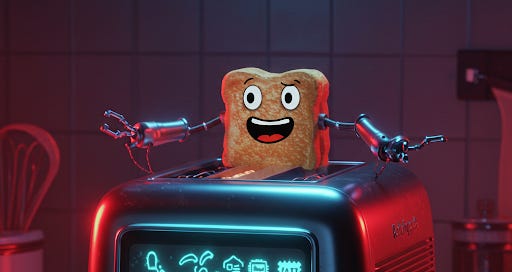Your bread is perfectly toasted!
This AI Tool Does So and So… But Does It Really Need To?
Let’s play a game. Imagine you’re walking through a tech expo, and every booth is shouting at you:
AI-powered this!
Machine learning-enhanced that!
Neural network-optimized whatever!
At some point, you start to wonder: Does my toaster really need to use AI to tell me my bread is brown?
Don’t get me wrong—AI is incredible. It’s helping doctors diagnose diseases, scientists predict climate patterns, and even writers like me avoid embarrassing typos (most of the time). But somewhere along the way, we decided that *everything* needs a sprinkle of AI magic. And now, we’re drowning in a sea of solutions that feel more like over-engineered party tricks than actual problem-solvers.
The AI Hype Train
Let’s face it: ‘AI’ sells. It’s the buzzword of the decade, the digital equivalent of putting ‘organic’ or ‘artisanal’ on a label. Companies know that slapping “AI-powered” on a product makes it sound futuristic, innovative, and worth your money. But here’s the kicker: just because something is labeled ‘AI-powered’ doesn’t mean it’s smarter—it might just mean it’s better at marketing.
Take the humble toothbrush, for example. Yes, there’s now an AI toothbrush that tracks your brushing habits and sends you a report. Because apparently, your dentist’s judgment isn’t scary enough. Or how about the AI-powered grocery list app that uses “advanced algorithms” to remind you to buy milk? Spoiler alert: your brain already does that.
When AI Creates More Problems Than It Solves
Every time we add AI to something, we’re also adding complexity. More code, more sensors, more things that can go wrong. Suddenly, your “smart” coffee maker needs a software update before it can brew your morning cup. And don’t even get me started on the privacy trade-offs—do we really want our toasters collecting data on us?
Then there’s the environmental cost. AI requires processing power, which means energy. Do we really need to burn fossil fuels so your yoga mat can critique your downward dog? (Yes, that’s a real thing.)
AI Done Right vs. AI Overkill
AI shines when it solves real problems. Take language translation apps—they’ve gone from laughably bad to scarily accurate, all thanks to AI. Or consider tools that help farmers optimize crop yields or predict natural disasters. These are game-changers.
But then there’s the AI-powered yoga mat that critiques your form. Sure, it’s impressive, but do you really need a mat to tell you your hips are uneven? (Your yoga instructor already does that.)
How to Spot AI That Actually Adds Value
Before you buy into the next AI-powered gadget, ask yourself:
Does this solve a problem I actually have?
Is the AI adding real value, or is it just a gimmick?
Could a simpler, non-AI solution do the job just as well?
Sometimes, the smartest choice is the one that doesn’t try to be too clever.
The Future of AI: Let’s Use It Wisely
Don’t get me wrong—I’m excited about the future of AI. Imagine a world where AI helps us tackle climate change, cure diseases, or even just make traffic jams a thing of the past. But for that to happen, we need to stop wasting AI on glorified paperweights and start focusing on the problems that really matter.
So, the next time you see a product that boasts about its “AI-driven revolutionary innovation,” take a moment to ask yourself: Is this actually making my life better, or is it just making my wallet lighter?
Now, if you’ll excuse me, I need to go check my AI-powered fridge to see if it’s judging my snack choices again.



